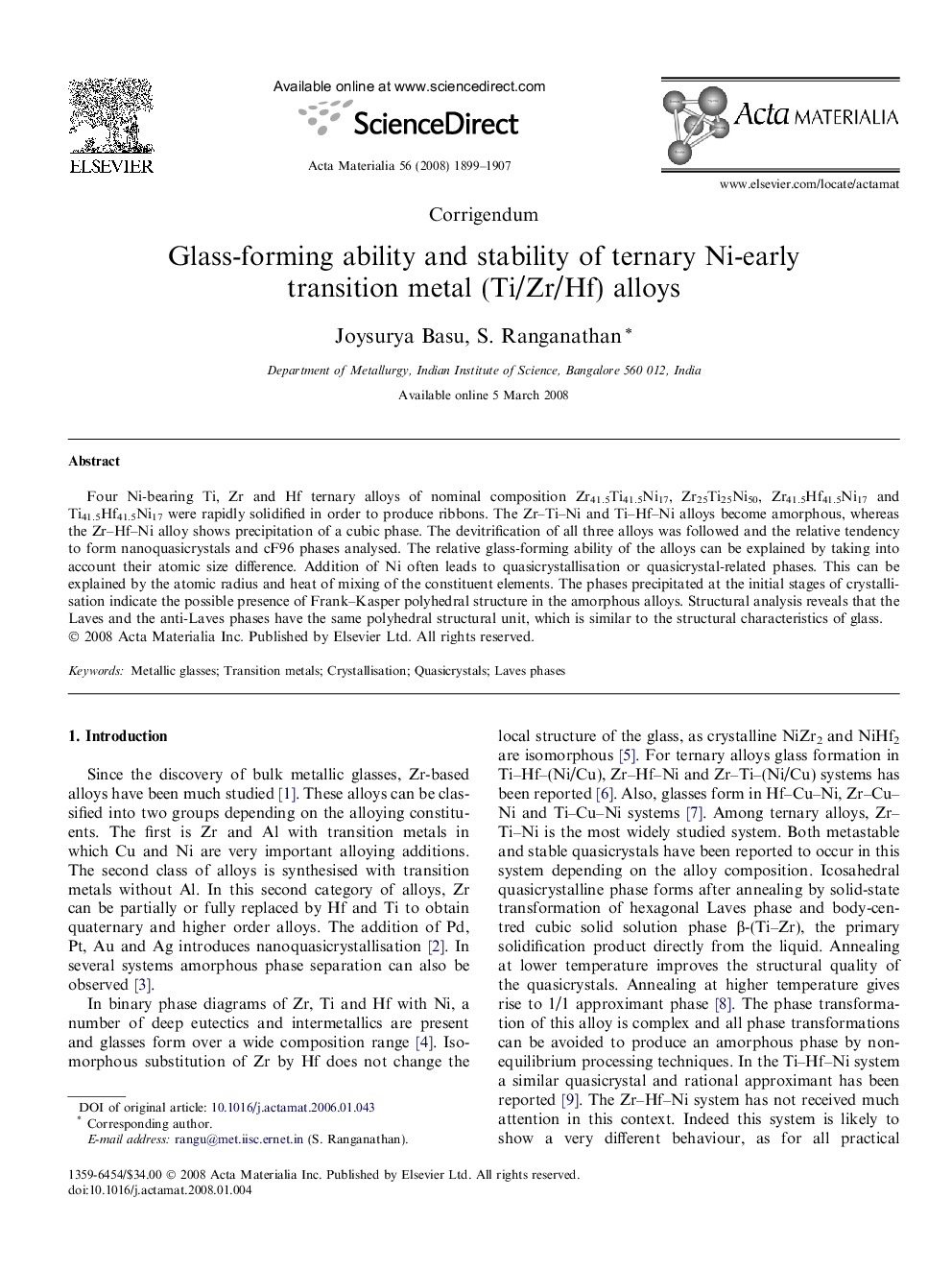| Article ID | Journal | Published Year | Pages | File Type |
|---|---|---|---|---|
| 1450336 | Acta Materialia | 2008 | 9 Pages |
Four Ni-bearing Ti, Zr and Hf ternary alloys of nominal composition Zr41.5Ti41.5Ni17, Zr25Ti25Ni50, Zr41.5Hf41.5Ni17 and Ti41.5Hf41.5Ni17 were rapidly solidified in order to produce ribbons. The Zr–Ti–Ni and Ti–Hf–Ni alloys become amorphous, whereas the Zr–Hf–Ni alloy shows precipitation of a cubic phase. The devitrification of all three alloys was followed and the relative tendency to form nanoquasicrystals and cF96 phases analysed. The relative glass-forming ability of the alloys can be explained by taking into account their atomic size difference. Addition of Ni often leads to quasicrystallisation or quasicrystal-related phases. This can be explained by the atomic radius and heat of mixing of the constituent elements. The phases precipitated at the initial stages of crystallisation indicate the possible presence of Frank–Kasper polyhedral structure in the amorphous alloys. Structural analysis reveals that the Laves and the anti-Laves phases have the same polyhedral structural unit, which is similar to the structural characteristics of glass.
